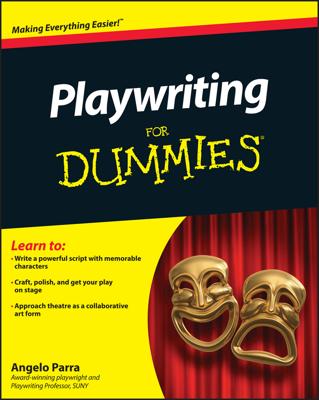The most natural mistake people make when reading Nostradamus's predictions is trying to take in everything he wrote all at once. He was a very deep guy with a lot to say, so don't try to get your PhD in Prophecy in one day. You could begin by selecting a topic, person, or idea that you find interesting and then finding a specific quatrain to match (you can look at what other people have said about a specific quatrain as a starting point for your own ideas). You could also begin by simply choosing quatrains at random.
Whichever way you choose to read Nostradamus, there should be a method to your madness —and the method should go something like this:
1. Read the entire quatrain in English all the way through several times, and jot down general ideas about what you think the topic may be (a war, a person, a church-related matter, and so on).
Don't get attached to your original ideas; they may change by the time you're done.
2. Note if your quatrain's translation from French to English matches word for word with other people's translations.
Sometimes tiny word changes by one translator can make a difference in how you interpret Nostradamus's meaning. Pick a translation that makes the most sense to you.
After you have a translation you like, try briefly reading over other people's understanding of the quatrain so you get a broad view of possible meanings that other people see within the quatrain.
3. Pick out what seem to be the most important or key pieces — names, places, and other things necessary for making any kind of sense of the quatrain.
Remember any relationships that exist between items. These relationships could be important later to understanding the text.
4. Examine these pieces of the puzzle from many different angles, and let your search be free form, but don't expect it to go in one direction.
Exploring the Internet and libraries, as well as brainstorming to find ideas associated with the items in the quatrain, are some of your best bets for unraveling these mysterious pieces. Try to find locations on maps and see what's nearby or whether there were important people around or events that happened in or near that town. For people, begin with their biographies and the important ideas and people associated with them. Often Nostradamus used a person to represent either an idea or a country.
If a word or place seems to lead nowhere, try rearranging the word (in English and in French if you can) to form other words. Remember that Nostradamus loved word tricks, so you need to be familiar with these techniques in order to unravel the tricky words in some quatrains.
Take notes on what you find for each piece. After you've gathered the pieces, look to see whether any of the pieces are related to each other. Do they all talk about Germany? Is everything about struggle or war-torn areas? These are the kind of general questions you should ask to try and tie the pieces together.
5. After you get the background information on who, what, and where the quatrain is discussing, reread the quatrain, and try to put it all back together as a story with more details.
This is the time to go back and really look at the relationship among the pieces in the original quatrain. Try rewriting the quatrain using summarized versions of the words you've researched. This kind of paraphrasing can help because it takes the sometimes awkward words of the quatrain and simplifies them. You may find that with your background knowledge of the previously mysterious pieces, the quatrain will begin to give up its answers.
6. Try to figure out when the events are supposed to shake down, using quatrain dating, history, and current events to help you.
Sometimes just knowing who's involved gives you an idea of time because you can look at the person's lifespan. Be careful, however, not to make assumptions. Just because Nostradamus used an older name for a place doesn't mean the events being discussed happened when the place was known by its ancient name.
7. Reread the quatrain and the information you've gathered about the pieces to see whether Nostradamus may have hidden an overall trend or pattern within the words.
This is the time to rely on what you know about Nostradamus's favorite topics and see if he has reverted to old habits by discussing politics, religion, France, or the like.
If the past just doesn't seem to match up with the pieces of your quatrain, you may need to look at more recent events. Keep an eye on the news, especially beyond the first headlines, on the topics of science, natural disasters, slow changes in political power, and issues that seem connected to the items in your quatrain. Even if nothing matches, you may still be able to find the beginning of a pattern (like the changes from Communism to free trade in Eastern Europe that have taken decades) that may be a future prediction. Don't toss out that quatrain just because the answer isn't in the past.
These steps form the basic outline for examining Nostradamus's quatrains and prophecies, but they aren't the definitive guides. Add your own steps as you find that they become necessary.

